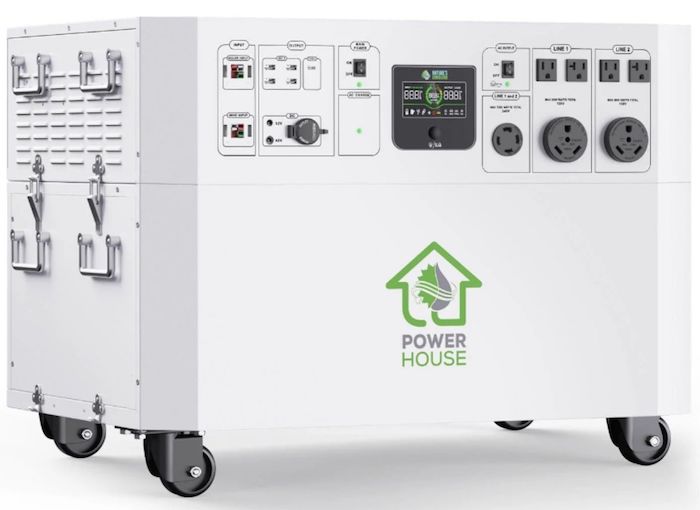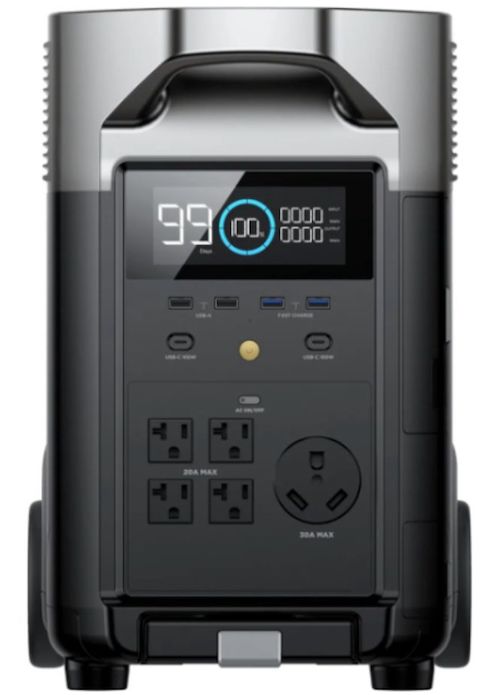Solar generators come in all shapes and sizes, however, they all have the same purpose, which is to power your devices and/or appliances.
When you need to power large appliances with one of these systems, you need three things:
- A powerful inverter to support AC appliances
- A large battery to sustain high amounts of power for long periods
- Recharging solutions that ensure that the battery remains charged
After reviewing the Nature’s Generator Powerhouse, I can show you that this system is capable of all of the above from my testing.
Max’s conclusion:
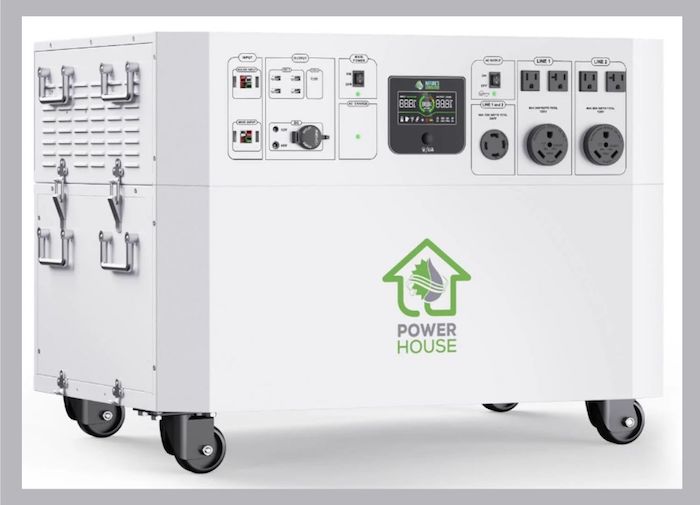
The Powerhouse packs a ton of AC power for big appliances. Its lead-acid battery makes it very difficult to maneuver, so this should stay in a designated location permanently.
| + Likes | – Dislikes |
|---|---|
| Supports 240V appliances | Very heavy (400+ lbs) |
| Quiet operation | Battery cycle life not as long as lithium cell type |
| Affordable vs competitors | No WiFi control |
The Nature’s Generator Powerhouse is best for those in need of big time backup power. With multiple AC ports ranging from 115V-240V, you can power heavy-duty appliances with ease. It also can recharge with wind turbines, which gives it an advantage when there is little to no sunlight.
Basic specs – Nature’s Generator Powerhouse
| Model/Specs | Nature’s Generator Powerhouse |
|---|---|
| AC Output (Max) | 7,200W |
| Solar Input (Max) | 2,000W |
| Wind Input (Max) | 1,000W |
| Battery Capacity | 4,800Wh+ |
| Battery Chemistry | Sealed Lead-Acid (SLA) |
| Weight (inverter module + battery) | 434 lbs (197 kg) |
| Dimensions (with wheels) | 28 x 18 x 22 in (72 x 46.6 x 56.8 cm) |
| Warranty | 12 months |
| User Manual | Powerhouse User Manual |
The product I reviewed and own is the Powerhouse Gold System. This package includes the Nature’s Generator Powerhouse with one battery and two 410W solar panels.
To begin, I’ll discuss its output ports.
Powerhouse output ports
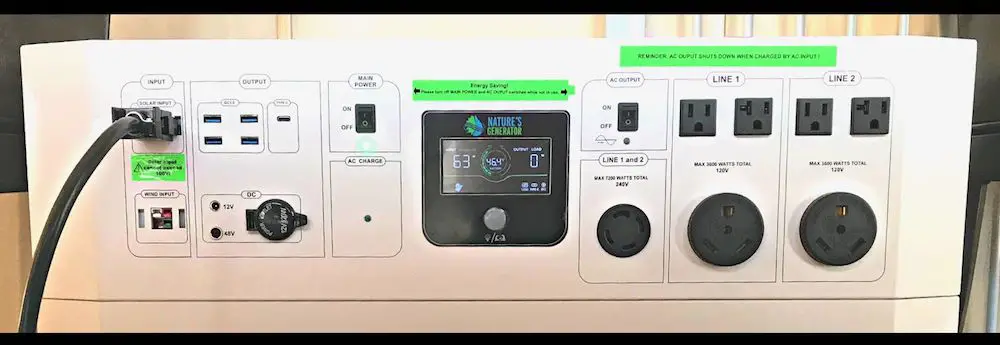
On the left side of the LCD screen lie the USB and DC outputs. On the right-hand side are all of the AC ports.
Below are the specs for each output port.
| Output Type | Output Details |
|---|---|
| AC Ports | 2x 120V/15A (1,800W max) 2x 120V/20A (2,400W max) 2x 120V/30A (3,600W max) 1x 240V/30A (7,200W max) |
| USB Ports | 4x USB-A QC 3.0 1x USB-C PD 3.0 |
| DC Ports | 1x 12V/10A Socket port 1x 12V/10A Barrel port 1x 48V/5A Barrel port |
The seven AC output options are split into three groups: two identical 120V groups labeled “LINE 1” and “LINE 2” and one 240V outlet labeled “LINE 1 and 2”.

As seen above, “LINE 1” and “LINE 2” each have 15A, 20A, and 30A AC outlets. These are all 120V options. The 240V, 30A option stands alone on the left.
AC output testing

I mainly tested two household items using the AC ports: my refrigerator and space heater.
Refrigerator test
The fridge ran easily and didn’t go over 150W even when its cooling stage was fully on. We opened the doors to the fridge to get the compressor to turn on full power and still only had a spurt of 150W until we closed the doors.
Considering that my fridge is an Energy Star model, this power consumption is probably lower than the average household refrigerator. However, it’s still a large model.
Most of the time during the fridge test, the generator idled at around 70W, which tells me that this generator can run for the entire day at this rate.
I’ve written about other solar generators that can run fridges, and I’ll need to add this one to the list.
Space heater test
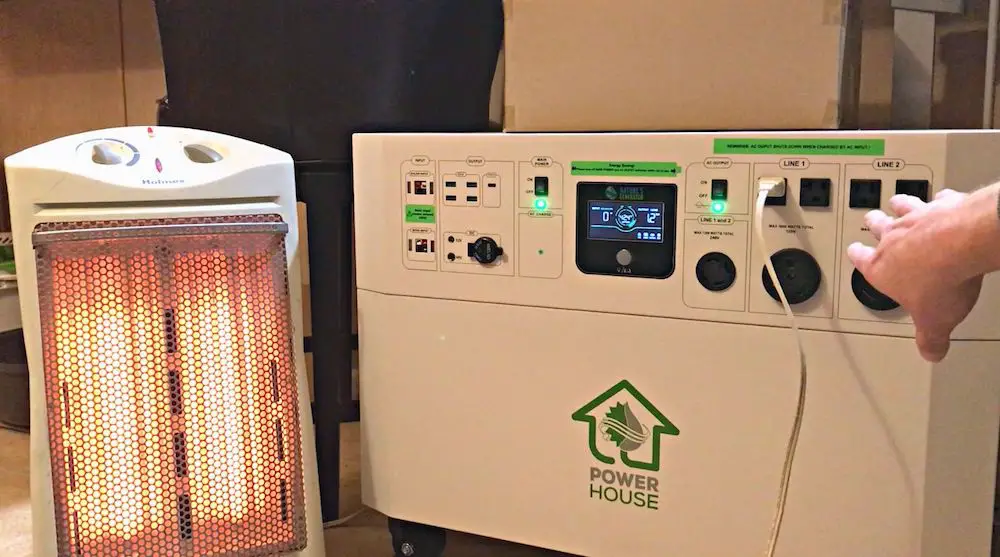
I tested two space heaters and the generator ran them with ease. The first test was with my small 500W office heater and it was no problem for the Powerhouse. After a minute or two of turning it on, the generator turned its cooling fans off and was completely silent.
My second test was with a standard-sized space heater. This one ran at 1,200W on its highest setting. Once again, this was no issue for the solar generator since it can run appliances up to 7,200W.
The Powerhouse also turned its cooling fans off while running the larger heater.
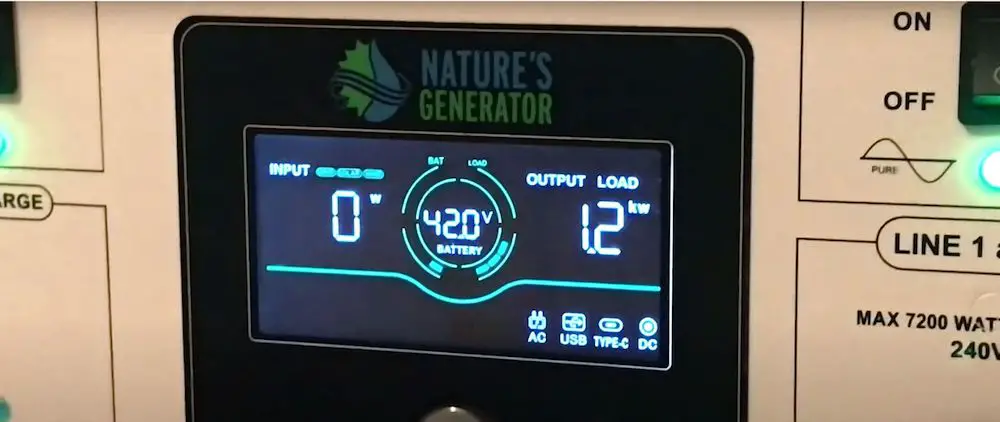
One important note: Try to run your heavy-duty AC appliances with a fully-charged battery. The manual mentions that you should charge the battery if it’s at half power (four battery bar icons) or less if you’re running big AC appliances. I didn’t follow this and ran my space heater until the last battery bar icon was showing (about 10% battery remaining).
Although it ran perfectly during my test, this wasn’t good for the battery. If I were to continue using it like this on a daily basis, the long-term battery performance (aka battery cycle life) would be limited.
Didn’t test its full capabilities
It’s not that I didn’t want to, but I didn’t have the appliances to run the Powerhouse to its 7,200W max output – or even close. I only got to test one-sixth of its potential power.
However, I plan on testing more AC outputs with beefier appliances and sharing my experiences with you down the line.
DC & USB output tests
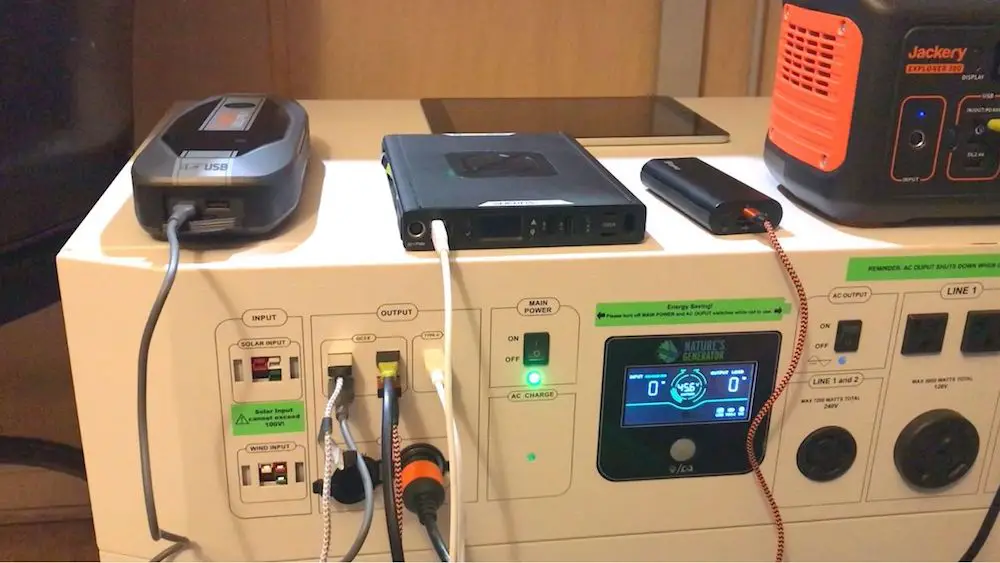
I tested each USB port individually and altogether. They all charged without issues. However, the USB-C output isn’t impressive. It only gave out 13W to charge my power bank (it can take in up to 60W).
This wasn’t a big deal for me, but it would be nice to have a 60W or 100W USB-C output. These high-powered USB ports are common in both small and large solar generators these days.
The USB-A ports all gave about the same 12-13W output, which is standard.

As for the 12V and 48V DC ports, I was only able to test the car port output, which worked without issue to charge my Explorer 300. I didn’t have the DC5521 cable to test with the small 12V output.
I’m not sure how common the 48V DC port is, but I didn’t have the equipment for testing it. Nature’s Generator has a security camera system that pairs with this output, so it looks like they built this port specifically for that accessory.
Charging the Powerhouse
With three recharging methods, you can keep your battery charging at any time of the day.
| Recharging Input Type | Max Input Power |
|---|---|
| Solar Panel Input | 2,000W |
| AC Charger Input | 1,300W |
| Wind Turbine Input | 1,000W |
Thanks to its wind turbine charging capability, the Powerhouse can continue to recharge its batteries at night. This allows you to recharge at all times of the day if desired. You can use solar during the day and then plug in the turbine when the sun starts to set.
Solar charging
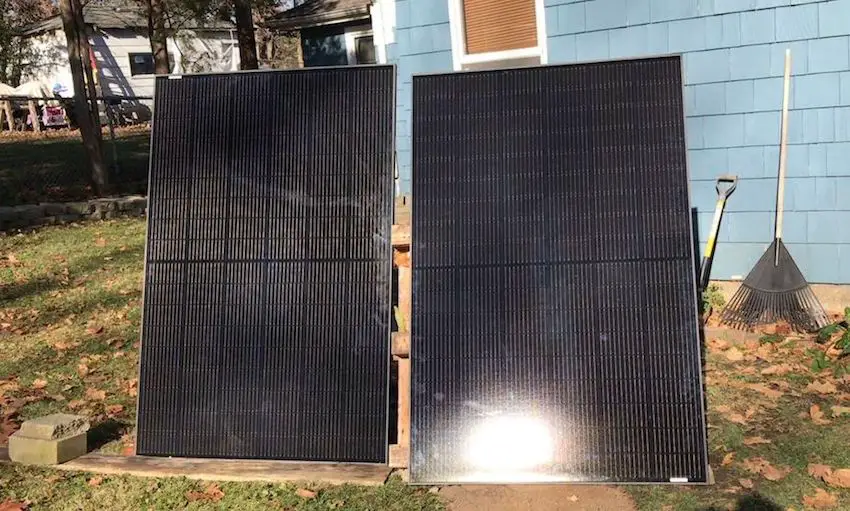
Using the two 410W solar panels that came with the Gold package, I was able to capture a lot of sunlight to charge the Powerhouse even on cloudy days.
I ran several tests with the help of my family in the winter season, and they proved successful at charging the generator’s battery even with cloudy skies.
The highest solar input I recorded was 314W on a mostly sunny cold day in the winter. It was below 10 degrees Fahrenheit outside, plus there were some potential obstructions outside that might’ve impacted how much solar came in.
First, there were tree branches that might’ve played a role in decreasing the full sunlight from reaching the panels. Plus, the sky was a little hazy in general during this testing day, which also could’ve played a role in decreased power from the panels.
Lastly, my solar panel setup wasn’t the best. My panels had slightly varying angles towards the sun. I normally adjust these throughout my testing, but the panels are huge and they were sliding a lot when I attempted to adjust the angle of the panels.
Nevertheless, I was getting about 300W consistently for three hours in these conditions.
I connected my solar panel in a series connection. This increases the solar input amperage while the voltage remains the same.

Another way to get more from your solar panels is to connect them in parallel. I’m not sure if you can do this with two panels, but you can do it with four. This style of connection doubles the voltage while the amperage stays the same. In this case, the cold weather outside during my test would’ve increased the voltage too, giving me better results.
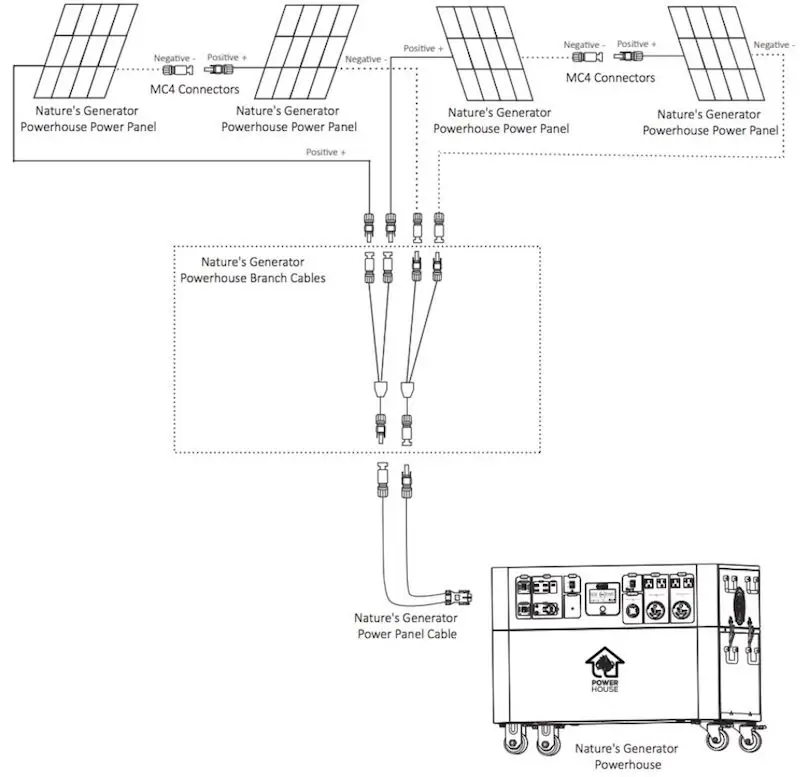
The MPPT charge controller in the Powerhouse is great for this parallel setup because it can adjust the voltage to accommodate a faster charge.
In my video review below, you can see two of my solar tests in varying weather conditions. I have the video queued to start about 18 minutes in to show you these tests as well as my setup.
View my solar testing on YouTube here.
Wall charging
The Powerhouse comes with an AC charging cord that is about six feet long. It is simply a large cable that connects to the back of the generator.
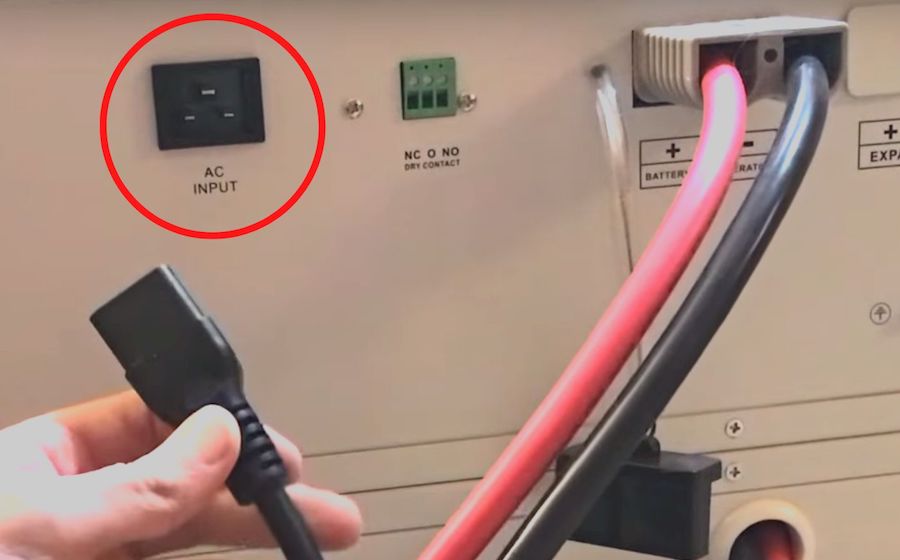
Most AC chargers for solar generators come with power adapters or charging bricks. This one didn’t, and I’m assuming that this allows for more power to come from the wall.
I received 950-1,000W of input power when wall charging. The battery was at about 50% (46V) during my testing. At this charging rate, the battery would be fully charged in around 2.5 hours.

It’s nice to have an AC charger in case I need to quickly recharge the system to prep for potential power outages.
Also, if my battery is running really low, I can AC charge it to a healthier level to protect the longevity of its battery.
Wind turbine charging
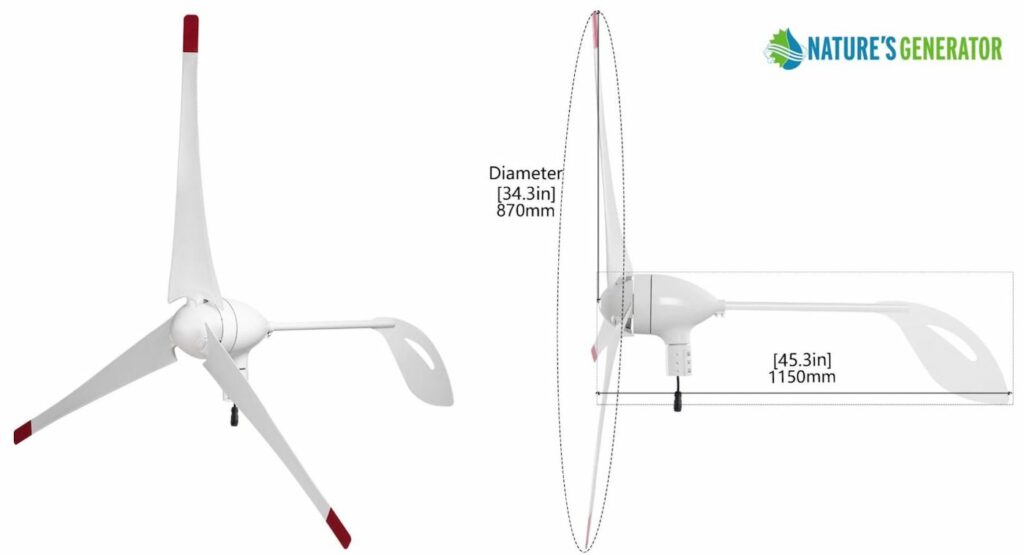
Although I did not get the wind turbine add-on, this can be a valuable tool for charging during cloudy days and at night. This helps to assist with solar charging to charge your batteries when the sun isn’t out.
If you intend to use your solar generator daily, this is ideal to have so your batteries charge more consistently.
You can get up to 1,000W of wind power into the Powerhouse. I’m not sure how much power you can get from a single turbine, but if you get a decent amount of wind throughout the year, I recommend looking into it.
You can find more information on this turbine on Nature’s Generator’s website.
on Nature’s Generator’s website.
Can the Powerhouse be used while charging?
The Powerhouse can be used while charging from wind, solar, or AC. All outputs can be used when charging from wind turbines or solar panels, however, only the DC and USB sections can be used when AC charging.
The AC output section shuts down when charging the generator from your wall outlet.
Unique features of the Powerhouse
This system has quite a few unique qualities that separate it from the small (but growing) crowd of large solar generators.
240V output
The powerhouse has a 240V, 30A (max) output. The fact that it can support 240V appliances makes it one of a kind.
Its competitors like the EcoFlow Delta Pro and Bluetti EP500Pro can only support 240V appliances if you buy two units and connect them to their own “voltage hubs” that combine their power for 240V accessibility.
Construction
The Powerhouse’s outer frame is made entirely of metal. It’s sturdy and built with longevity in mind.
The selection of ports is clearly aimed toward AC devices and appliances with seven total AC outputs. This is understandable due to its high power output and large battery.
Its wheels are excellent for supporting its weight. It has two non-rotating wheels on one side and two fully rotating wheels with wheel locks on the other side.
On the top portion of the system where the ports lie, there are two sturdy handles on each side for easy transport with two or more people.
The solar panels that came with the Gold package are both powerful and durable. They are made with a metal frame and are 410W each. Two of these panels are included with the Gold kit in addition to a heavy-duty 50ft solar panel cable.
LCD screen

Although each solar generator has its own unique LCD screen, the Powerhouse has several icons and indicators to show you exactly what is happening within itself during use.
Below is the diagram showing each function of its LCD screen.
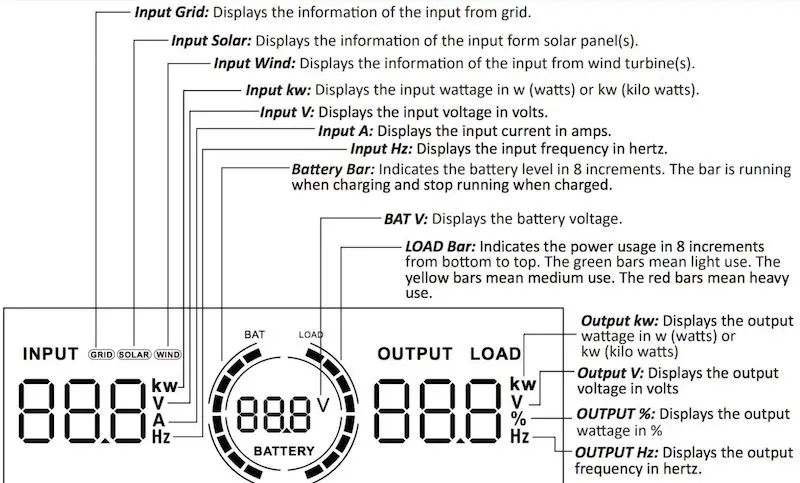
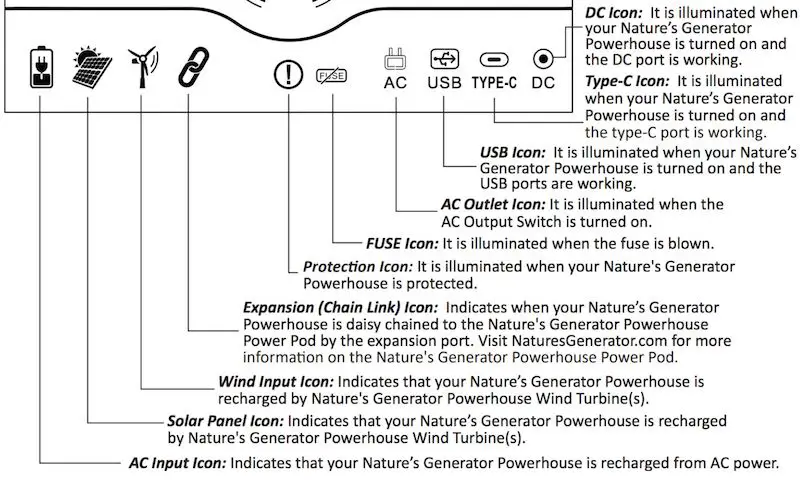
Noise
When you first turn on the AC power switch, the Powerhouse inverter fans make some noise in the first minute or two. However, in my testing, these fans turned off even when powering my 1,200W space heater.
This leads me to believe that this solar generator has exceptional cooling, which leads to silent power.
Cost
Although any solar generator of this size and caliber is going to cost a lot of money, the Powerhouse is one of the least expensive on the market.
The company, Nature’s Generator, is solely focused on making its products to help people with their off-grid power needs. One of the most difficult choices for consumers in the solar generator industry is whether they can afford to buy a large off-grid system when they can cost several thousands of dollars.
Without sacrificing quality, the company finds ways to make their systems more affordable. One way they’ve done this is by using sealed lead-acid batteries (SLA) in their power stations instead of lithium.
Although lithium batteries are lighter and last longer than lead-acid variants, they are also significantly more expensive. With lead-acid batteries in the Powerhouse system, the company is able to reduce the cost for their customers. In addition, the Powerhouse uses sealed lead-acid batteries, which are the ideal cell type out of the lead-acid family of battery types.
Installation
Due to the size of this solar generator, the installation was not the easiest. In fact, its complete/final installation plans are still in progress due to the size of the overall system.
My Powerhouse currently resides in my family’s kitchen area which sits under the kitchen table next to our barstools. This was ideal for filming my video review and testing. However, its final location will be in the basement of our home.
The basement will allow my dad to connect it to our home’s power box and/or connect it to one of Nature’s Generator’s power transfer switches.
Plus, the basement is cooler than the upstairs and has a relatively consistent temperature throughout the year. This allows the generator to be in an ideal environment for cooling its battery down while in use.
And lastly, the basement location is out of the way of anything else in the home, so the generator can have its own distinguished area.
Grounding the Powerhouse
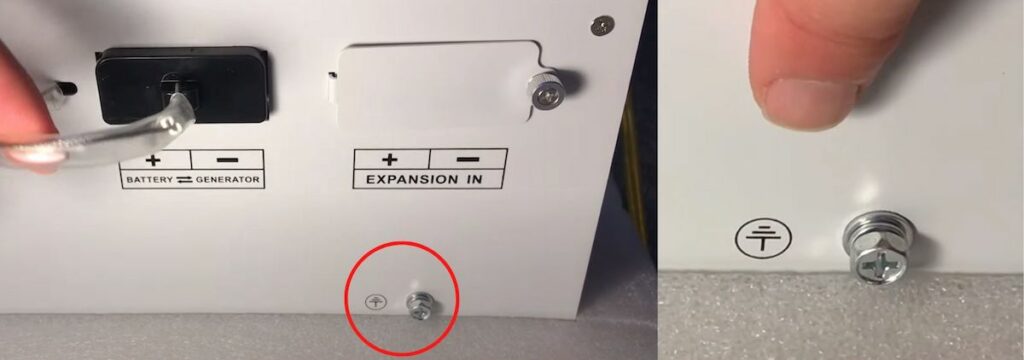
Depending on the appliances you’re using, you may need to ground the Powerhouse. This is meant to protect you from electrical shock.
“Electrical grounding, otherwise known as earthing, primarily provides a measure of safety against electric shocks by acting as a safety line to redirect electric current in the event of short circuits.”
– Energy Education
Nature’s Generator Powerhouse vs. similar power stations
*(Recharging Times): The listed solar input and recharging time is based on the maximum solar input - not the solar panel rated power output (Ex: a 100W solar panel usually produces about 80W of actual power in good sunlight).
To summarize the above, the Powerhouse is less expensive than the other options listed, but its battery cycle life is shorter than the others.
Batteries are an important factor in solar generators because the longer they last, the less you have to worry about replacing them.
Considering the size of the Powerhouse battery, this should not be an issue for most people looking for a backup power solution. But if you’re looking for a system to use to its full extent on a daily basis, you should consider one with a longer battery cycle life.
How big of a solar generator do you need?
Sizing a solar generator depends on your intended power consumption. Calculate the output and duration of the appliances you’re likely to use. In a solar generator, the inverter handles output needs while the battery and solar panels dictate run times.
Here are some of my resources to help you figure out the right solar generator size for your power needs:
- What Size Solar Generator Do You Need? (Sizing Guide)
- 3 Best Solar Generators for Your Fridge (With Run Times)
- Can a Solar Generator Run a Space Heater? (W/ Run Times)
Would I get the Powerhouse over its competition?
I would get the Powerhouse over the competition specifically for backup power purposes at home.
The Powerhouse has all the qualities of a reliable backup solar generator for large appliances. It comes with a preinstalled 240V outlet – a rarity in the solar generator industry. However, its lead-acid battery is heavier and doesn’t last as long as the lithium batteries found in most of its competitors.
It can be recharged via solar panels and wind turbines, which is also rare in the solar generator market. This allows you to recharge off the grid during the day and at night.
To me, this comes down to battery longevity. Its upfront cost is well under the competition. That being said, its battery cannot compete with the longevity of most lithium batteries found within its competitors.
If you’re using the Powerhouse for when the power goes out, then it’s a great choice.
If you want to use it to lower your utility costs by powering some appliances on a daily basis, it may not be the best choice considering the eventual need to buy another battery once the one you have runs out of juice.
The ideal needs that this system meets include:
- Powering 120-240V appliances
- Consistent recharging of its battery with solar + wind power
The Powerhouse is one of the best solar generators for home backup power. This system is built to keep the necessities of your home accessible in case of emergencies (when the power goes out).
Below I put together a list of kits offered by Nature’s Generator. There are several more options available, but I want to share a sense of what they offer.
Nature’s Generator Powerhouse packages
| Product | Price | What’s Included |
|---|---|---|
Powerhouse | $2,999.99 | 1x Nature’s Generator Powerhouse Generator 1x Nature’s Generator Powerhouse Battery Storage 1x AC Power Cord |
| Powerhouse Gold System | $3,999.99 | 1x Nature’s Generator Powerhouse Generator 1x Nature’s Generator Powerhouse Battery Storage 1x AC Power Cord 2x Nature’s Generator Powerhouse Power Panels 1x 50ft Nature’s Generator Power Panel Cable |
Powerhouse Gold Plus PE System | $5,399.99 | 1x Nature’s Generator Powerhouse Generator 1x Nature’s Generator Powerhouse Battery Storage 1x AC Power Cord 4x Nature’s Generator Powerhouse Power Panels 1x Branch Connector 1x 50ft Nature’s Generator Power Panel Cable 1x PowerhousePower Transfer Kit 1x Conduit for Power Transfer Kit 1x Cable clamps for Power Transfer Kit 10 Foot 12AWG Power cord for Power Transfer Kit |
Powerhouse Platinum WE System | $7,499.99 | 1x Nature’s Generator Powerhouse Generator 1x Nature’s Generator Powerhouse Battery Storage 1x AC Power Cord 1x Nature’s Generator Powerhouse Power Pod 4x Nature’s Generator Powerhouse Power Panels 2x Nature’s Generator Power Panel Cables 1x Nature’s Generator Wind Turbine 1x Hub Nose cone 3x Wind Turbine Blades 100ft wind turbine cable 1x Controller box Hardware and tool bag |
For a full list of Nature’s Generator Powerhouse kits and packages, click the button below to be redirected to their product page.
For all of my tests and further analysis, watch my video review on YouTube below.

